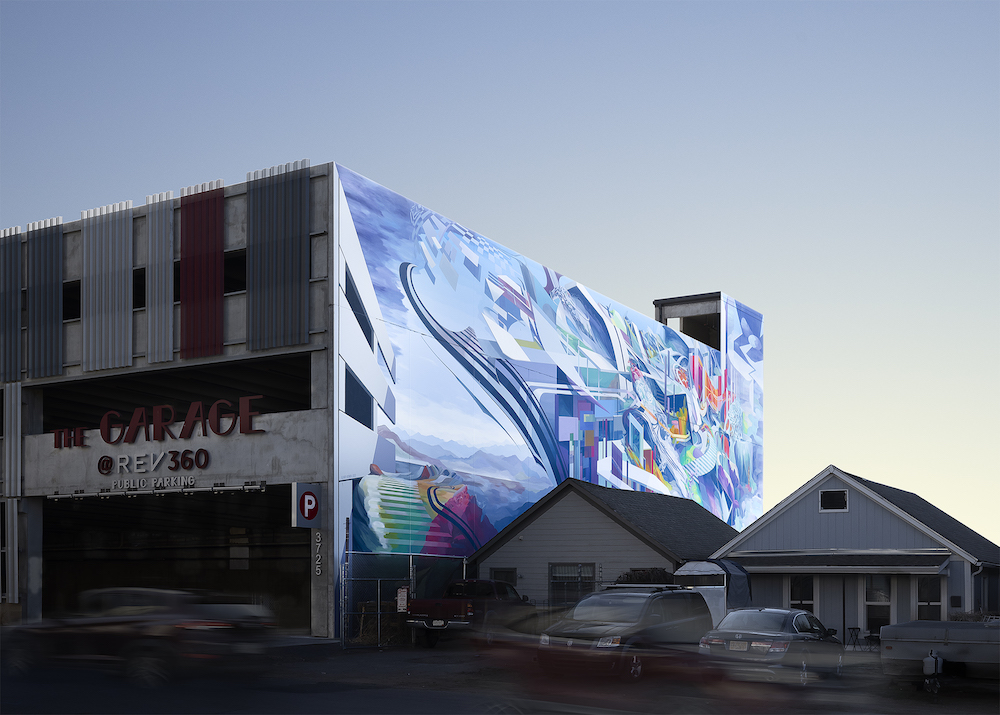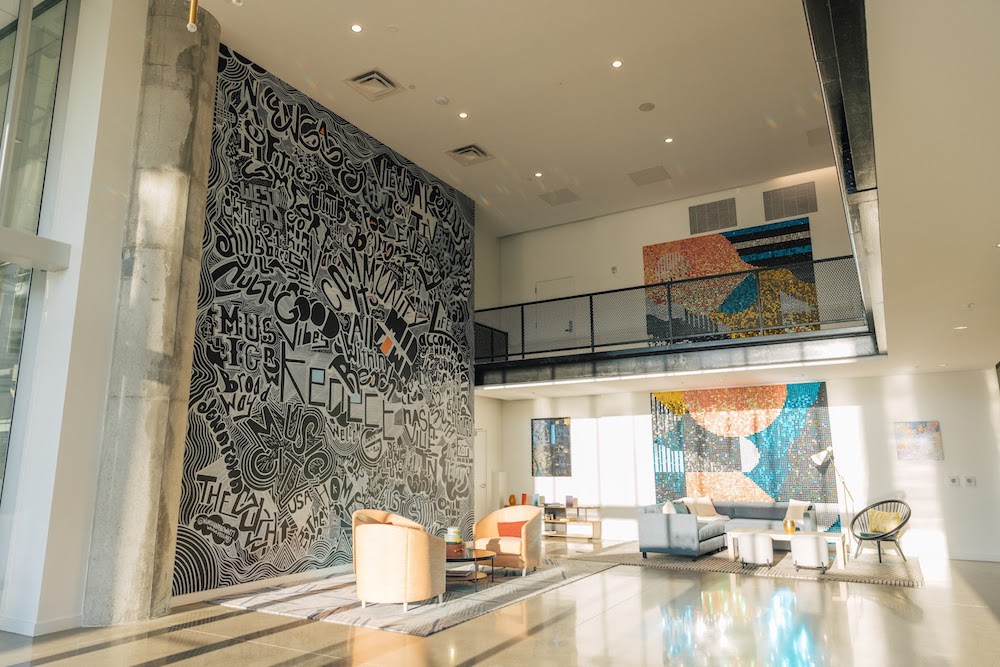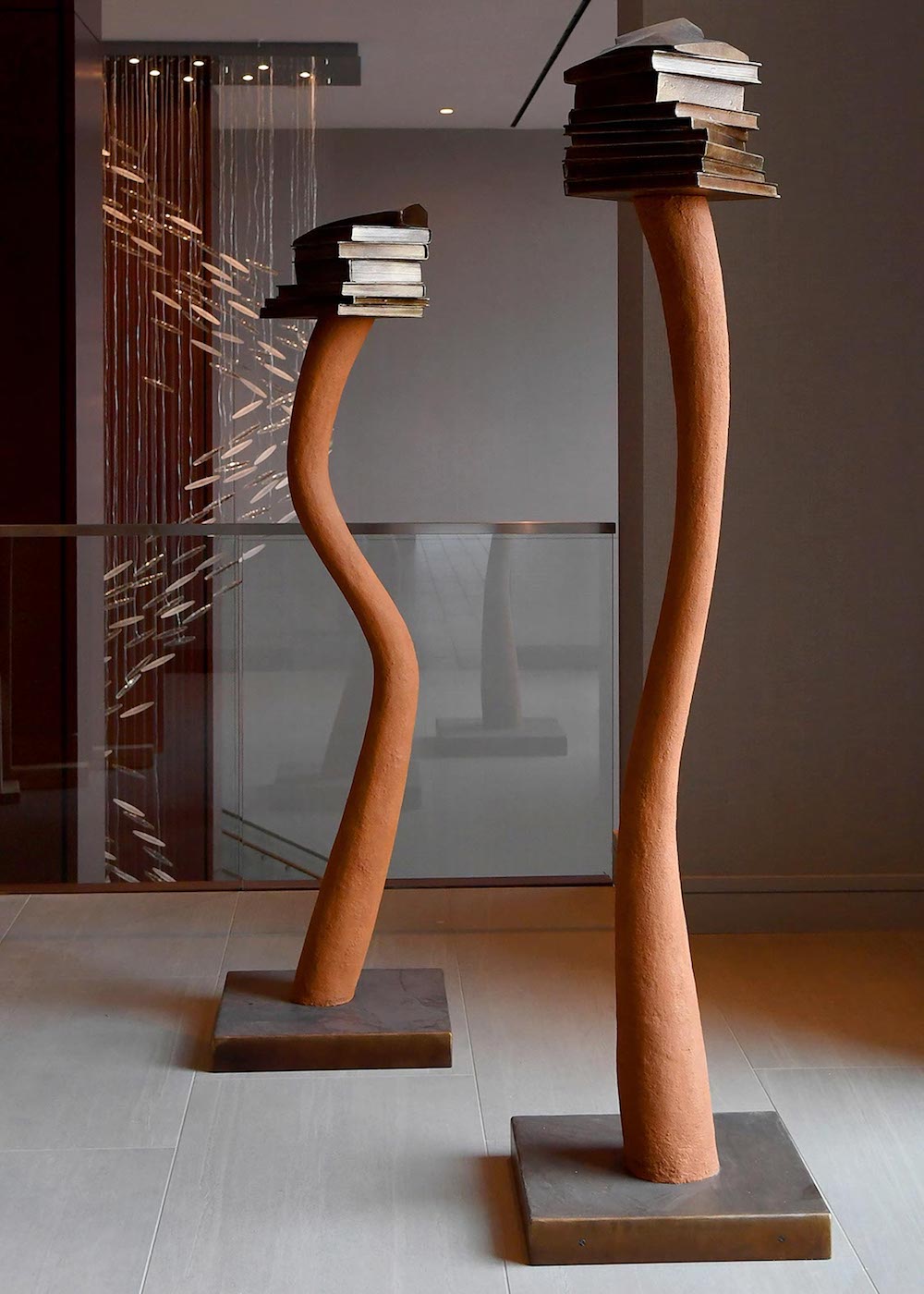Martha Weidmann of NINE dot ARTS shares how to increase employee engagement, performance, and satisfaction with cultivated workplace art.

Health and wellness have become mainstays in office culture discussions. As organizations define their new normal, employee wellbeing must be a top priority.
A recent study by McKinsey found that approximately one in three workers said their return-to-office negatively impacted their mental wellbeing. Their two main concerns included threats to physical health and safety and a loss of the self-sufficiency they had gained in a remote environment. Nowadays, organizations seeking to revolutionize the workplace and satisfy their employees must provide safe, comfortable, and productive spaces that empower their staff to thrive.
For Rev360, an office and retail building in Denver’s River North neighborhood, creating such a workplace began with thoughtful building design and infrastructure. Through touch-free building access, new ventilation and air filtration systems, and integration of outdoor space, Rev360 offers a healthy and secure environment for all tenants. Yet developers didn’t stop there. Acknowledging that wellbeing extends well beyond safety protocols, Rev360 went one step further by incorporating an original art collection into their space, highlighted by a massive outdoor mural that attracts both employees and visitors alike.
This large discovery moment by artist Oliver Vernon energizes both the office space itself and those who interact with it. It exemplifies that art creates memorable experiences that improve the quality of life for those who use a space. After all, intentional art work is essential to placemaking. It serves as the connective tissue among people and places, infusing creativity, culture, and community spirit into its surrounding environment, and making that environment more welcoming and engaging for all. And offices are no exception.
If workplaces seek to increase employee engagement, performance, and satisfaction, they should stop treating art as a decorative afterthought, and instead focus on cultivating a collection that brings about these benefits and more.

Art encourages safe socialization
As the pandemic evolves, so too does the need to design with social distancing in mind. Fortunately, designing for distance has been found to encourage adaptability and agility, two qualities that allow art to shine. When flexible, multifunctional spaces incorporate site specific artwork, they provide opportunities for both distancing and dialogue; safety and socialization.
Take Kenect Nashville, a mixed-use residential property. The building’s several open areas include a lobby, co-working space, and rooftop lounge – each with engaging artworks that both excite visitors and bring intention to the open, multipurpose spaces they are part of. A 19-foot-high lobby mural spans two floors, beckoning visitors up a stairway. Meanwhile, thoughtful shelf styling in the coworking space prompts quiet reflection and inspiration. No matter the area, art plays an integral role in how one experiences the space. And that experience is infinitely enriched because of it.

Art gives us purpose
Art brings meaning to our lives and enhances everyday experiences. When it serves as an employee meeting spot (“Meet me by the blue sculpture!”) or a visitor wayfinding tool (“Follow the mural down the hallway.”), art makes even our daily interactions more memorable. No matter the industry, professional responsibilities can sometimes feel monotonous. But when original artwork becomes integrated into our workdays, that monotony lessens, giving rise to inspiration, imagination and innovation – feelings we may forget in a mundane work setting.
In a recent report, 91% of respondents said it’s valuable when a space becomes known for an art collection. This type of wow factor not only fosters brand awareness, but creates a place employees can feel invested in and proud of.
When the Bonfils-Stanton Foundation moved into their new space in Denver’s Santa Fe Arts District, they were seeking just this – an art collection that resembled their own arts advancement goals and that enticed and engaged employees and visitors. To achieve this, we curated a vinyl garage art piece, a mixed media installation, a building-wide mural and a variety of other unique works that enlivened the space. Each pays homage to the neighborhood’s thriving artistic community and the organization’s own art-forward mission.
The art curation for UNC Charlotte Marriott Hotel and Conference Center was approached with the same intentionality, aiming to build community and communicate meaning through a 490-piece art collection. Made primarily by local artists, the collection features several pieces from the University of North Carolina Charlotte’s faculty, alumni and students, telling a compelling story about the history of the space and the importance of education. Altogether, the artwork brings purpose to both the hotel and the community, giving residents something to be proud of and visitors something to admire.

Art fosters inclusion
A key factor to a healthy work culture is when employees feel like they belong, and can bring all of who they are to their work. This is one reason why companies can benefit by being explicit in their values related to diversity, equity, inclusion and belonging (DEIB). Such values are critical for individual and collective workplace wellbeing.
Beyond making blanket statements, one way to celebrate and live up to these values is through a thoughtfully curated art collection. At the Clayton Members Club and Hotel, a public-private partnership prioritized the need for diverse voices, leading to a vibrant art collection consisting of works by several underrepresented and emerging local artists. The art thus uplifts diverse identities while demonstrating the Clayton Club’s steadfast belief in supporting creatives.
Similarly, at Catbird, works that showcase diversity in both the artists represented and the subject matters are displayed. From compelling portraits that highlight people of color to a sculpture inspired by the need for LGBTQIA+ representation in decision-making, Catbird’s artwork creates a sense of belonging for the many visitors who enjoy the space.
Intentional use of art early in the planning process can help foster a healthy workplace
In summary, workplaces that foster safe socialization, inclusive interactions and purpose are the workplaces that will have engaged employees and a thriving work culture. And in those workplaces, art will be a central focus. This means it should be considered early in the workplace design, instead of as an afterthought that brings few benefits.
Over 80% of professionals surveyed in a recent report agreed that thinking about art in the early on can improve the outcome of a project. Yet only 69% reported thinking about art prior to the project breaking ground.
When it comes to incorporating art, the earlier the better. And this is especially true for achieving these workplace benefits. Early art integration creates efficiencies across budget, artist selection, artwork placement and more. Moreover, it allows a project’s vision to come to life. For office spaces, themes of health and wellness can feel ingrained into the workplace’s DNA, with the artwork serving as a conduit to communicate those values, engage employees, and inspire a productive and fulfilling professional environment.

